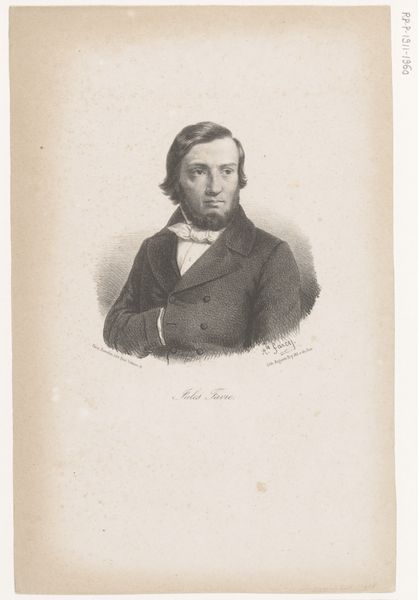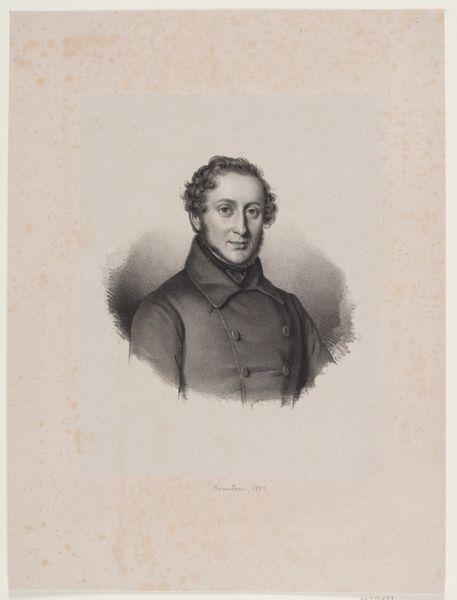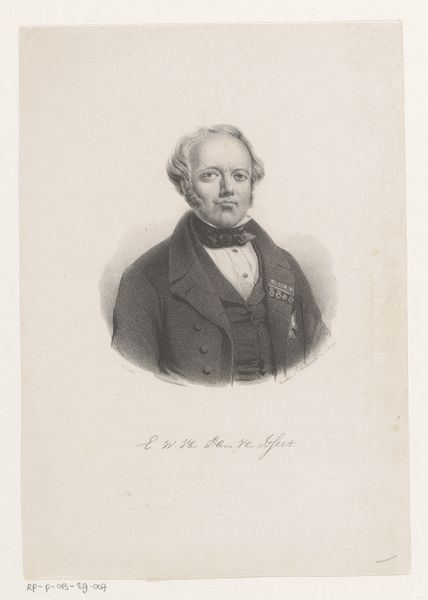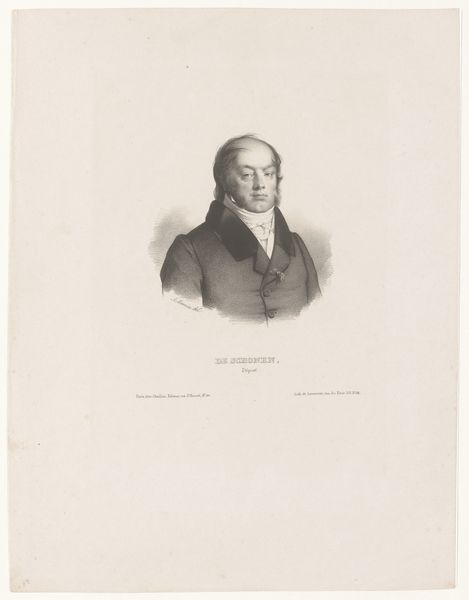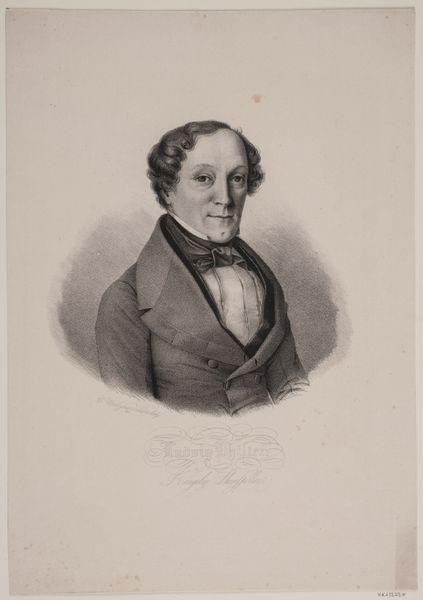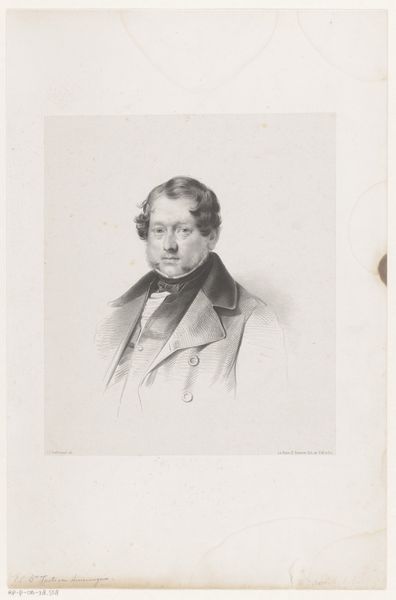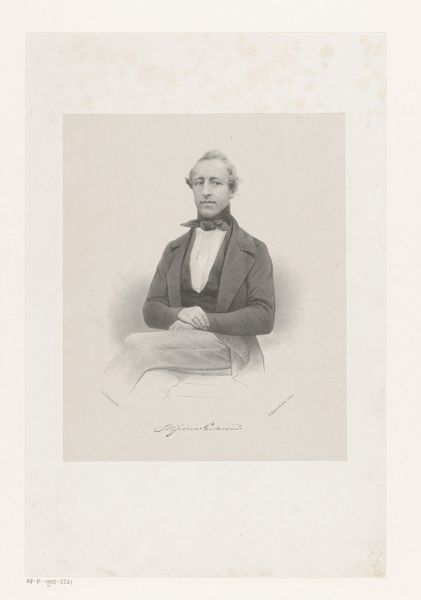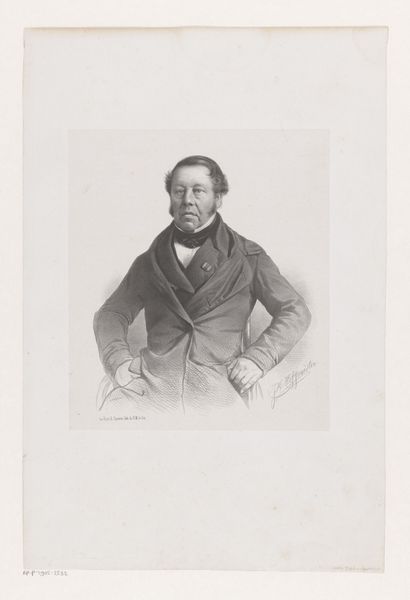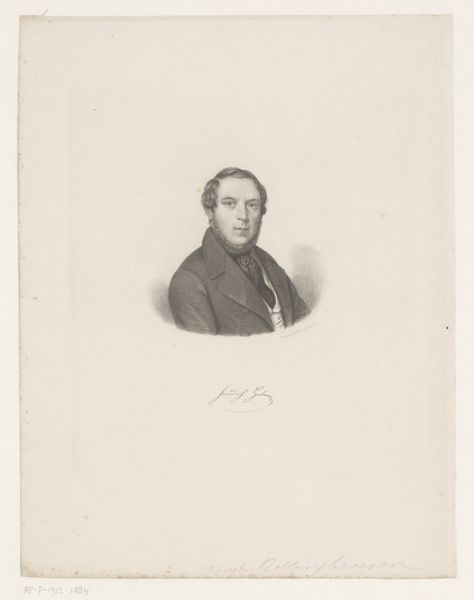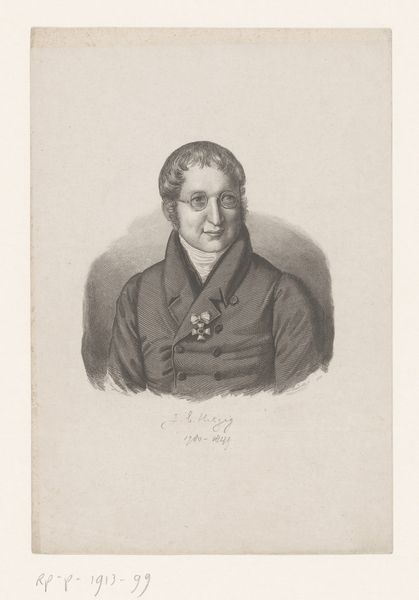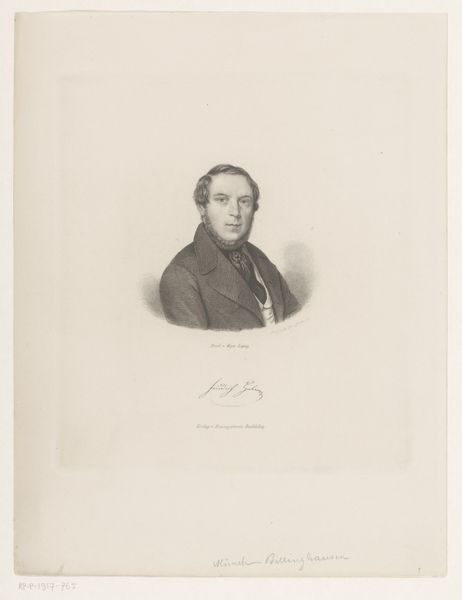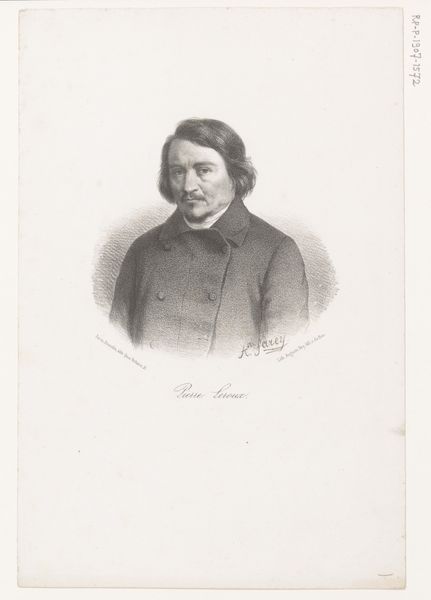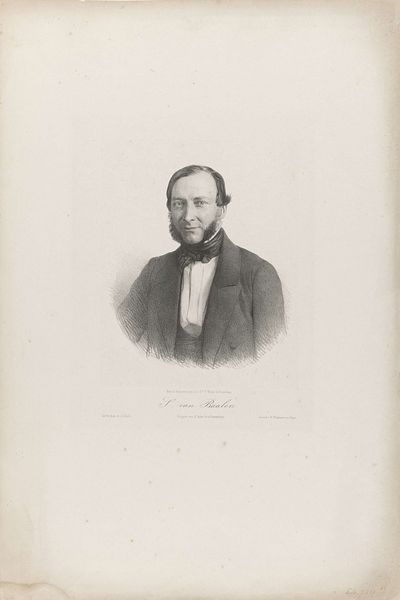
print, engraving
#
portrait
# print
#
romanticism
#
academic-art
#
engraving
#
realism
Dimensions: height 272 mm, width 181 mm
Copyright: Rijks Museum: Open Domain
Editor: Here we have Alphonse Farcy's "Portret van Louis Henry" from 1849, an engraving on paper. The sitter seems like a man of importance and confidence; his gaze is assured, but something about the gray scale lends the whole piece a sense of melancholic resignation. What do you see in this portrait? Curator: What strikes me is how this seemingly straightforward portrait is, in fact, embedded in complex social and political currents. Consider the year, 1849 – a time of revolution and upheaval across Europe. This image becomes more than just a likeness; it’s a statement. Who was Louis Henry within this context? Was he a member of the bourgeoisie, solidifying their power through portraiture? Or might the melancholic resignation you sensed hint at anxieties about the shifting social order? The artist, Farcy, also warrants further scrutiny; what role did he play in constructing or subverting dominant ideologies through his artistic practice? Editor: That's fascinating. I hadn't thought about the revolutionary context at all, just focusing on aesthetic impression. Does the medium itself – the print – have implications for how we understand the image and its role? Curator: Absolutely. Prints allowed for wider distribution and accessibility. Was this portrait intended for a limited, elite audience or for broader circulation? Did that affect its intended message and reception? Think about the power dynamics at play: who controls the means of image production and dissemination, and what narratives are being reinforced or challenged as a result? What assumptions does Henry, and Farcy, expect his viewing audience to bring to the table? Editor: I guess analyzing portraits involves a lot more than just looking at the surface! Curator: Exactly! It demands that we consider the portrait as an active participant in the socio-political landscape. Examining this portrait through an intersectional lens challenges us to unpack its layers of meaning and to recognize how representations of power are always entangled with questions of identity, class, and history. I wonder, where does our discussion lead you now in terms of interpreting other artworks? Editor: This reframing encourages me to analyze art in its surrounding world rather than focusing on purely aesthetic qualities. Thanks!
Comments
No comments
Be the first to comment and join the conversation on the ultimate creative platform.
